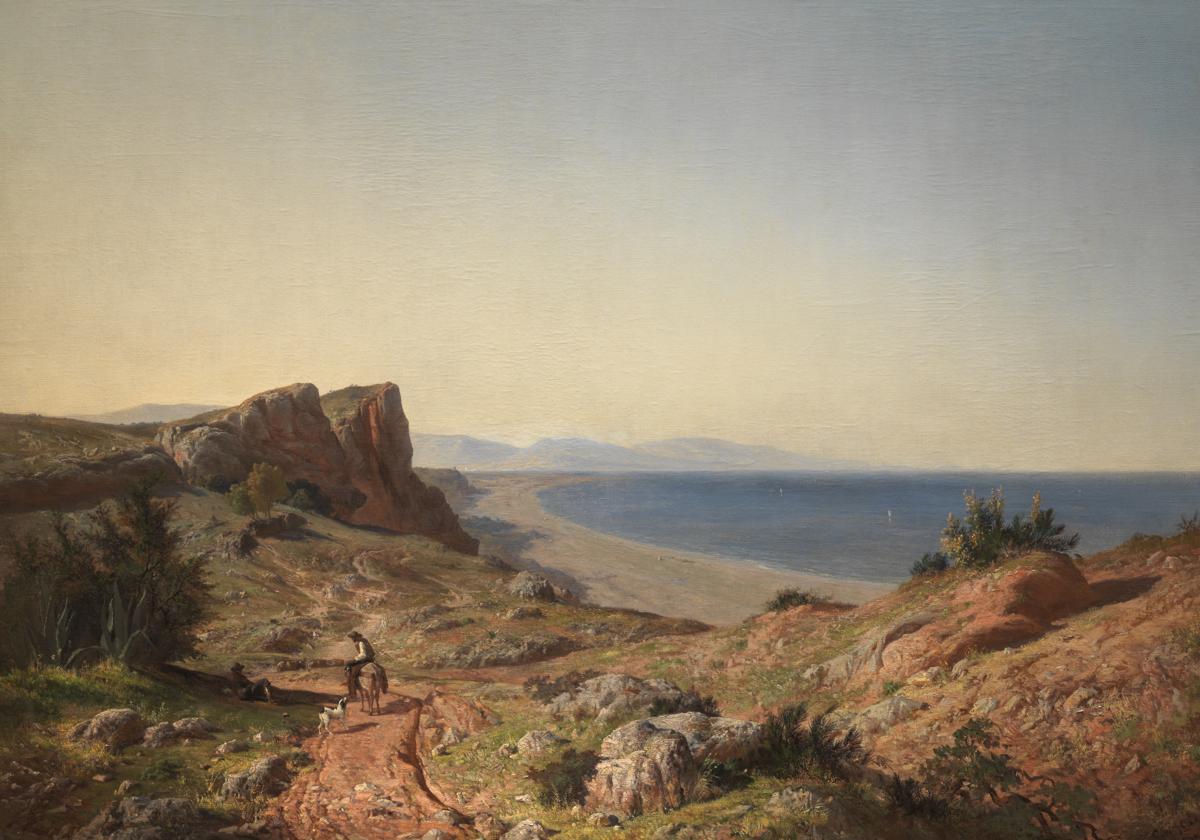A British landing in Torremolinos in 1857
The first known English landing took place shortly before an Anglo-Dutch squadron commanded by Admiral Rooke took Gibraltar on 4 August 1704 in the context of the War of the Spanish Succession
Víctor Heredia
Friday, 15 August 2025, 17:48
The municipality of Torremolinos had more than 70,000 inhabitants last year. Among its population, in which 125 nationalities are represented, the British community has a certain weight, with 1,300 residents.
In addition, 200,000 tourists from Great Britain spent their holidays in the town during 2024. This is an authentic disembarkation that has been repeated annually since the 1960s, but which has a remote and very different background.
The first known English landing took place shortly before an Anglo-Dutch squadron commanded by Admiral Rooke took Gibraltar on 4 August 1704 in the context of the War of the Spanish Succession. In the previous weeks, the fleet had been moving around the Mediterranean and on 18 July it had anchored in the bay of Malaga.
The water flowing down from the springs, which moved the town's flour mills, ran down to the beach and was a popular watering point for the ships that sailed in the area. The Torre de Pimentel, the other element that gave its name to the town, overlooked the cliff and served to warn of the arrival of possible enemies.
When Rooke's sailors disembarked to take on water and supplies in Torremolinos, they were met with hostility and his troops suffered some casualties. The English admiral's anger led him to inform the Malaga council that his troops were not to be disturbed, under threat of disembarking and plundering the surrounding area.
This fact showed the inability to defend the coast, which became evident when Rooke carried out his threat and some two thousand men came ashore and burned and plundered the mills and farmhouses around Torremolinos.
Militias were formed and part of the population, including the communities of nuns, were evacuated from Malaga. Fortunately, the fleet weighed anchor and headed west. The danger was over, but the fate of Gibraltar was to remain sealed until the present day.
Rooke's ships still had time to return, but the presence of a Franco-Spanish fleet commanded by the Count of Toulouse forced them into battle on 24 August off Vélez-Málaga. The largest naval encounter of the War of the Spanish Succession ended with an uncertain outcome, but a great opportunity was lost to have recaptured Gibraltar after Rooke's retreat. The French ships returned to Toulon without pursuing the enemy.
The experience of 1704 led years later to the construction of a battery at the foot of the Torre de Pimentel. A map dated 1739 referred to "the battery that has been built in front of Torremolinos" in order to prevent enemies from taking advantage of the water, "as the British navies have done on different occasions". In 1762, Antonio Jiménez de Mesa built another battery at his own expense at the Punta de Torremolinos. This small fortification would later become known as Castillo de Santa Clara (Santa Clara castle).
One more, but peaceful
In the middle of the 19th century there was another British landing on the beaches of Torremolinos, but this one was totally peaceful. In the summer of 1857, another fleet led by another famous admiral moved through the waters of the bay of Malaga. This was the Mediterranean fleet, commanded by Admiral Lyons, which passed through Malaga and remained anchored off Torremolinos from 14 to 16 August.
Admiral Edmund Lyons had played a prominent role in the Crimean War as commander-in-chief of the British Navy, especially in the siege and conquest of the strategic port of Sebastopol. But on this occasion his men enlivened village life and, as far as we know, caused no damage.
This is how the chronicler of 'El Avisador Malagueño' described the passage of the British: "At that point, they were taking on water from the spring that flows towards the sea, which is lost with so little benefit at a short distance from its source. On this occasion, the beach of Torremolinos, in the vicinity of the mill of El Peligro, has offered the liveliest picture that can be given, particularly on Friday and Saturday, when a large number of the crew went down to the beach to carry out the water-taking tasks. On Saturday afternoon, Mr Admiral, with his young and beautiful niece and several chiefs also disembarked, and by the picturesque gorge went up to the town. Some pounds sterling have also been left by the English in Torremolinos, as they have bought fruits and other effects". The first pounds that these ‘guiris’ left in this future tourist emporium.
Langworthy and those who followed
The English Army major George Langworthy bought the Hacienda de Santa Clara from Liborio García in 1905. Together with his wife, Anne Margaret, he is perhaps the first permanent resident of British origin in Torremolinos. Shortly afterwards, the presence of another British resident in La Nogalera, James William Miller, became known. The arrival of Brits from the 1920s onwards became commonplace and the first hotel accommodation in the town, the Hotel Santa Clara (1930) and the Parador de Montemar (1934), especially welcomed British and American travellers who came to the incipient Costa del Sol via Gibraltar. The census records of the 1930s show the existence of a settled colony that rented houses and, in some cases, the old mills that had fallen into disuse. In La Loma we find residents such as Francis Cuthbert Doyle, Gerald Butler and Douglas Campbell Kooke, or John George Spencer Churchill in the Molino del Rosario. He was a renowned artist who had achieved fame as a decorator of aristocratic salons, as well as being the nephew of Sir Winston Churchill.

Comentar es una ventaja exclusiva para registrados
¿Ya eres registrado?
Inicia sesiónNecesitas ser suscriptor para poder responder.
Necesitas ser suscriptor para poder votar.